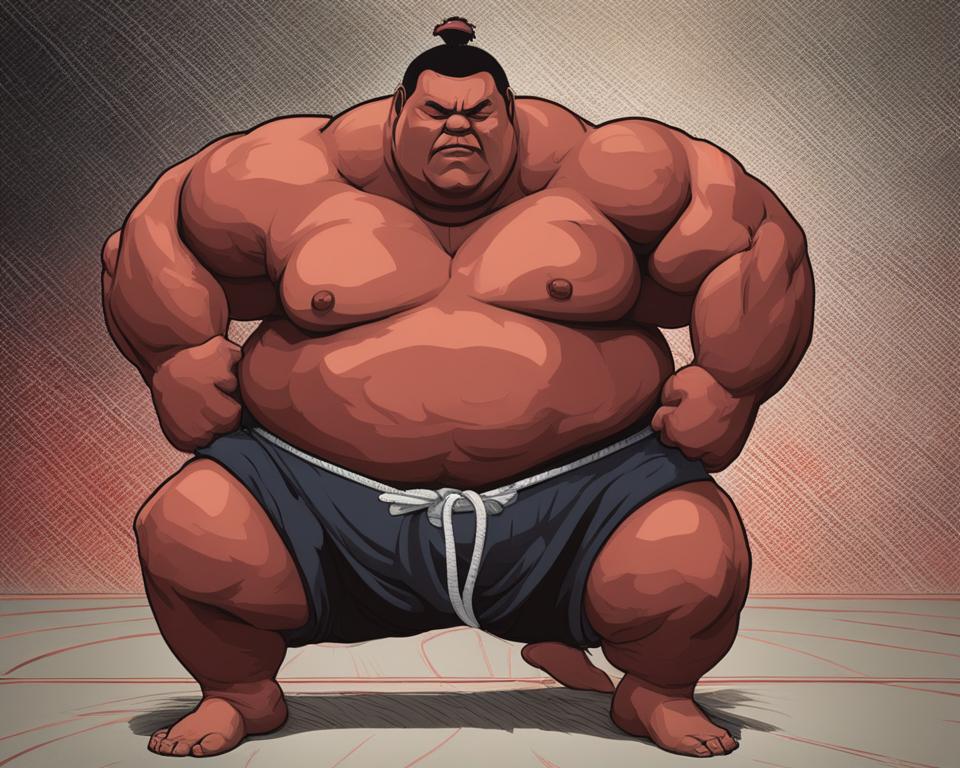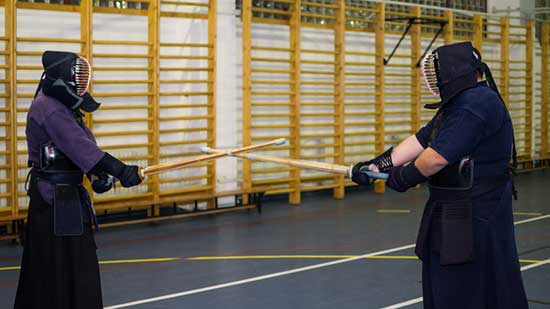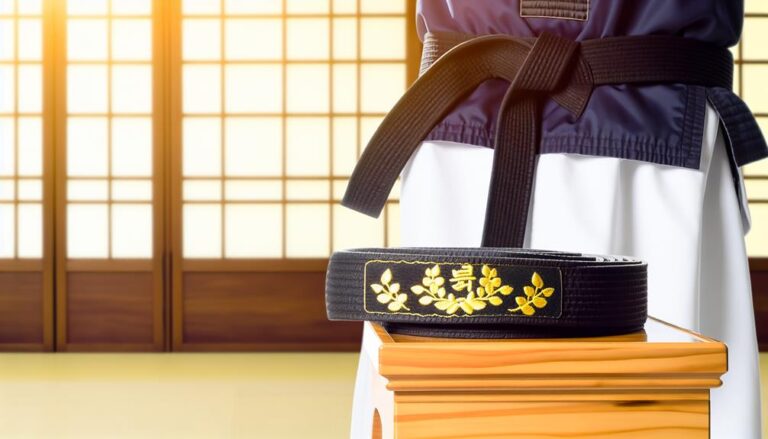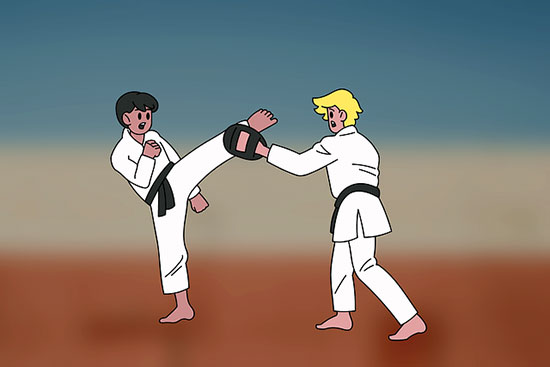Sumo wrestling is a fascinating sport that showcases the strength, skill, and dedication of its participants. One aspect that stands out in sumo wrestling is the wrestlers’ weight. From the heaviest to the lightest, the weight of sumo wrestlers varies significantly depending on various factors.
Key Takeaways:
- The weight of sumo wrestlers can range from the heaviest to the lightest.
- Sumo wrestlers are classified into different weight categories.
- Factors such as diet, training, and body type influence the weight of sumo wrestlers.
- Efforts are being made to promote a healthier approach to sumo wrestling.
- Sumo wrestling continues to hold cultural significance in Japan.
Contents
The Impact of Diet on Sumo Wrestler Weight
One of the key factors influencing the weight of sumo wrestlers is their diet. Sumo wrestlers follow a unique eating regimen that is designed to support their size and strength. The traditional diet of sumo wrestlers is known as chanko-nabe, a hot pot dish that consists of a variety of ingredients including meat, fish, vegetables, and tofu.
This high-protein meal helps them meet their caloric intake requirements and provides the necessary nutrition for their intense physical training.
Chanko-nabe is a balanced and nutritious meal that not only helps sumo wrestlers gain weight but also supports their overall health and well-being. The dish is rich in vitamins, minerals, and antioxidants, providing essential nutrients for muscle growth, repair, and recovery.
Additionally, the high caloric content of chanko-nabe allows sumo wrestlers to sustain their energy levels during long training sessions and grueling matches.
The Role of Chanko-nabe in Sumo Wrestler Training
The consumption of chanko-nabe is deeply ingrained in the culture of sumo wrestling. It is not only a source of sustenance but also a symbol of the wrestlers’ dedication and commitment to their craft.
Sharing a communal meal of chan-ko-nabe fosters a sense of camaraderie among the wrestlers and reinforces the unity within their training stables.
While chan-ko-nabe is a fundamental part of a sumo wrestler’s diet, it is worth noting that individual wrestlers may customize their meals based on personal preferences and dietary requirements. Some wrestlers may opt for variations of chanko-nabe that are lower in calories or specific to their nutritional needs.
However, the core principles of the sumo wrestler diet remain the same – an emphasis on protein-rich ingredients and a focus on meeting the high caloric demands of the sport.
Physical Training Regimen of Sumo Wrestlers
Sumo wrestlers undergo rigorous physical training to build the strength, stamina, and agility necessary for the sport. The physical training of sumo wrestlers encompasses a variety of exercises and practice sessions that are specifically tailored to their unique requirements.
One key aspect of sumo wrestler training is weightlifting. This form of exercise helps them build muscle mass and increase overall strength. Additionally, cardiovascular exercises such as running and swimming are incorporated to improve their endurance and cardiovascular fitness.
Sumo-specific exercises are also integral to their training routine. These exercises focus on techniques and movements specific to sumo wrestling, including pushing, pulling, and grappling. By practicing these techniques repeatedly, sumo wrestlers develop the necessary skills and muscle memory required in the ring.
Sample Sumo Wrestler Workout:
| Exercise | Sets | Repetitions |
|---|---|---|
| Barbell Squats | 4 | 8-10 |
| Deadlifts | 3 | 6-8 |
| Bench Press | 3 | 8-10 |
| Shoulder Press | 3 | 8-10 |
| Sumo Squats | 3 | 12-15 |
It is important to note that the training regimen of sumo wrestlers may vary depending on their individual needs and goals. However, the emphasis on strength, endurance, and sumo-specific exercises remains consistent among all wrestlers.
Variations in Sumo Wrestler Physiques
Sumo wrestlers come in a variety of body types, with each wrestler having a natural weight that is influenced by their genetic factors and individual characteristics. These variations in physiques contribute to the unique and diverse nature of sumo wrestling. Understanding the different body types of sumo wrestlers can provide insights into their strengths and challenges within the sport.
Body Types of Sumo Wrestlers
Sumo wrestlers can be classified into three main body types based on their natural weight and physical characteristics:
- Mesomorphs: These wrestlers have a naturally muscular and heavyset build, making it easier for them to gain weight and maintain a larger physique. They tend to excel in power-based techniques and can exhibit great strength in the ring.
- Endomorphs: Endomorph wrestlers have a stockier build with a higher percentage of body fat. They have a tendency to gain weight more easily and carry more mass, which can provide them with added stability and balance during matches.
- Ectomorphs: Ectomorph wrestlers have a leaner and lighter build, making it more challenging for them to gain weight and compete against heavier opponents. However, they can compensate for their lighter weight with agility, speed, and technique.
It’s important to note that these body types are not fixed categories, and many sumo wrestlers may exhibit characteristics of multiple types. The natural weight and physique of a sumo wrestler play a significant role in their performance and strategy within the ring.
Natural Weight of Sumo Wrestlers
Each sumo wrestler has a natural weight range that their body tends to maintain. This weight can be influenced by factors such as metabolism, genetics, and overall body composition.
While some wrestlers naturally have a higher weight and struggle to stay within a specific weight class, others may have a lower natural weight and need to actively work to gain weight for their division.
It’s important to recognize that the weight of a sumo wrestler is not necessarily an indicator of their skill or ability in the sport. Sumo wrestling emphasizes technique, strength, and strategy, regardless of a wrestler’s size or weight category.
| Body Type | Natural Weight Range |
|---|---|
| Mesomorph | 200-400+ pounds |
| Endomorph | 180-350 pounds |
| Ectomorph | 150-250 pounds |
Table: Natural weight ranges for different body types of sumo wrestlers.
Understanding the variations in sumo wrestler physiques and natural weights adds to the complexity and intrigue of the sport. The combination of different body types, skills, and strategies creates a dynamic and captivating experience for both athletes and spectators alike.
Health Concerns and Efforts Towards a Healthier Approach
Sumo wrestling, with its unique sport and cultural significance, brings with it certain health concerns for the wrestlers.
Carrying excess weight can lead to various health risks, including an increased likelihood of developing diabetes, heart disease, and joint problems. Recognizing the importance of the wrestlers’ well-being, the Japan Sumo Association has implemented new regulations to address these concerns.
In 2018, the Japan Sumo Association made it mandatory for sumo wrestlers to undergo regular health examinations. These examinations help identify any potential health issues and ensure that the wrestlers receive appropriate medical attention and support.
Additionally, sumo wrestlers are now required to maintain a minimum level of physical fitness, encouraging them to adopt a healthier lifestyle and reduce the risks associated with their weight.
These efforts towards a healthier approach in sumo wrestling aim to protect the long-term well-being of the wrestlers. By prioritizing their health and fitness, the Japan Sumo Association is taking proactive steps to mitigate the health risks associated with the sport. This not only ensures the physical health of the wrestlers but also promotes the longevity and sustainability of sumo wrestling as a cultural tradition in Japan.
| Health Risks of Sumo Wrestling | Health Concerns for Sumo Wrestlers |
|---|---|
| Increased risk of diabetes | Mandatory health examinations |
| Higher chance of heart disease | Minimum level of physical fitness required |
| Joint problems and injuries | Promoting a healthier lifestyle |
By proactively addressing the health concerns associated with sumo wrestling, the Japan Sumo Association is working towards creating a safer and more sustainable environment for wrestlers.
These measures not only protect the physical well-being of the athletes but also contribute to the overall integrity and longevity of the sport. As sumo wrestling continues to evolve, the focus on health and fitness is vital for ensuring its continued success and cultural significance.

Diversity and Challenges in Sumo Wrestling
Sumo wrestling, a traditional Japanese sport, has faced challenges in terms of diversity and the participation of non-Japanese wrestlers. Historically, the majority of sumo wrestlers have been Japanese, and the sport has been deeply ingrained in Japanese culture. However, efforts are being made to address these obstacles and promote diversity within the sport.
One of the challenges in attracting non-Japanese wrestlers to sumo is the cultural and linguistic requirements. Sumo wrestling is deeply rooted in Japanese tradition and has its own set of rules, rituals, and customs.
Non-Japanese wrestlers who wish to compete in sumo must immerse themselves in Japanese culture and learn the language to fully understand and participate in the sport. This can be a significant barrier, particularly for those who come from different cultural backgrounds.
Another challenge is the high training and competition costs associated with sumo wrestling. Sumo wrestlers require specialized training facilities, coaching, and access to tournaments to develop their skills and compete at a professional level.
The financial burden of pursuing a career in sumo can be prohibitive for non-Japanese wrestlers, especially those from countries with limited resources or support for the sport.
The Importance of Diversity in Sumo Wrestling
Despite these challenges, promoting diversity in sumo wrestling is essential for the growth and evolution of the sport. Introducing more non-Japanese wrestlers can bring new perspectives, techniques, and styles to sumo, enriching the overall experience for both participants and spectators.
It can also help to expand the global reach and popularity of the sport, fostering international interest and engagement.
Efforts to Promote Diversity
The Japan Sumo Association has recognized the need to increase diversity in sumo and has taken steps to encourage international participation. They have established programs and initiatives to attract and support non-Japanese wrestlers, providing them with opportunities to train in Japan and compete at professional levels.
These efforts aim to break down the barriers that prevent non-Japanese wrestlers from pursuing a career in sumo.
Overall, while diversity in sumo wrestling remains a challenge, progress is being made to create a more inclusive and welcoming environment for non-Japanese wrestlers. By embracing diversity, sumo can continue to grow and thrive as a sport that transcends cultural boundaries and captivates audiences around the world.
Conclusion
Sumo wrestlers come in a range of weights depending on their weight class, diet, and body type. While the heaviest sumo wrestlers can weigh well over 400 pounds, not all wrestlers reach these weights. The weight of a sumo wrestler is influenced by factors such as their weight class, diet, and body type.
Sumo wrestlers consume a large amount of food to maintain their size and strength. Their traditional diet, known as chanko-nabe, is a hot pot dish that typically includes a high amount of protein and vegetables. This diet helps them meet their high caloric intake requirements and supports their intense physical training.
In addition to their diet, sumo wrestlers engage in a rigorous physical training regimen. This includes weightlifting, cardiovascular exercises, and sumo-specific exercises designed to build strength and stamina. They also undergo intense practice sessions, which include various sumo techniques and drills. This training helps them develop the necessary physical attributes and skills required for sumo wrestling.
Despite the challenges and health concerns associated with carrying excess weight, efforts are being made to promote a healthier approach to sumo wrestling.
The Japan Sumo Association has implemented new regulations that require sumo wrestlers to undergo regular health examinations and maintain a minimum level of physical fitness. These measures aim to ensure the well-being of the wrestlers and promote a healthier approach to the sport.





